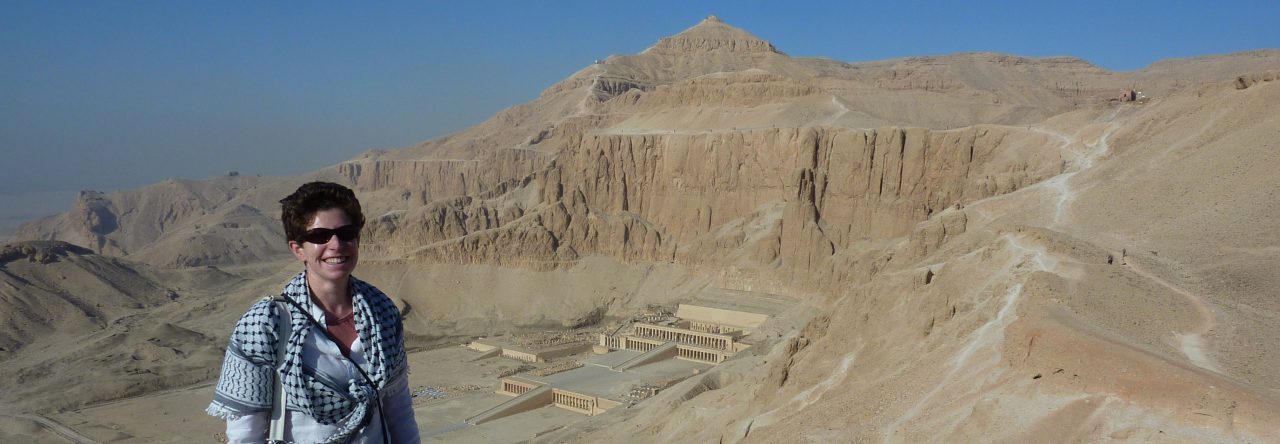Cairns are a common enough feature of the Egyptian landscape, but one I find fascinating. They are apparently ordinary and innocuous, are easy to build and hard to date, and have recently been subject to the serious archaeological research they deserve (Riemer 2013).
So I was intrigued to meet some very familiar looking cairns while on holiday on Lanzarote, in the Atlantic Ocean, off the coast of North Africa and some c. 2600 miles from the Nile valley. Cairns in Egypt exhibit a variety of different forms, and several of these different types were visible on Lanzarote. The route up and around the crater of the Red Mountain, an extinct volcano west of Playa Blanca at the south end of the island, was marked by a series of rough cairns made by simply piling stones in a heap.

Some felt moved to mark their successful ascent of the extinct volcano by creating miniature piles of stones, and a vast array of similar stone piles were visible on the foreshore at Marina Rubicon, close to an area of former salt pans and derelict windmills. While the modern stone piles were probably engendered by the artistic impulses of the locals and the boredom of passing tourists, the accumulation of the features was very similar to the piles recorded at Egyptian sites and generally assumed to be of a ritual nature (see for example the upright stones at Gebel Tingar published in Storemyr et al. 2013).

Elsewhere in Lanzarote similar piles of vertical stones, arranged in lines, were used to mark field boundaries between vineyards or garden plots, much like simple navigational aids found along ancient desert roads in Egypt.
The explanation for these similarities is very simple, but their existence is thought-provoking. Like Egypt, Lanzarote is a place where there is very little wood (due to a lack of rainfall and high temperatures), but abundant small stones. Instead of building wooden markers and fences, it is far more efficient for people in both countries to use local stones to mark their property, their routes, their success and their artistry.
There may also be a common North African origin for the cairn-building activities in Egypt and Lanzarote, although it should be pointed out that there is no evidence of any direct connection between the Egyptians and the Canary Islands. The native inhabitants of the Canary Islands (commonly known as Guanches) are believed to have originated in North Africa, and their native language is similar to indigenous North African groups. Since the desert environment extends across much of North Africa, it would be logical for many North African groups to use cairns and other stone formations for various purposes. The ancestors of the Guanches are likely to have been part of this general ‘cairn culture’, just as the Egyptians were on the opposite side of the continent. It would be interesting to track the occurrence of cairns and stone piles around the Sahara, to see how common these forms are cross-culturally.
Cairn-building habits are convenient for the archaeologist, who benefits from surviving stone structures long after wood would have decayed in all but the best conditions. They can aid in the identification of routes and significant places, and they also demonstrate the continuity of human-nature. The tourists on the beach at Playa Blanca built additional stone piles to feel part of something that began before they arrived and will continue after they leave. It is likely that a similar motivation prompted those ancient Egyptians who contributed to the stone piles at Gebel Tingar, even if this was subsumed within more complex religious or ritual ideals.
The Lanzarote cairns also demonstrate a number of problems of cairn archaeology. The very simple forms used on Lanzarote are extremely similar to those used in Egypt, and probably elsewhere as well. If a modern cairn looks very similar to an ancient one, this makes any given structure difficult to date. It also raises questions of function. If the piles of stones on the beach at Playa Blanca are artistic, why should the structures at Gebel Tingar be ‘ritual’? How can we distinguish between the two? These are the questions I am trying to answer in my research on Egyptian cairns, cairn-culture and landscape archaeology.
References
Cairns feature regularly in papers in F. Förster, and H. Riemer, (eds.), 2013. Desert Road Archaeology in Ancient Egypt and Beyond, Africa Praehistorica 27, Köln, but see particularly H. Riemer, ‘Lessons in landscape learning: The dawn of long-distance travel and navigation in Egypt’s Western Desert from prehistoric to Old Kingdom times’ for cairns in navigation; and Storemyr, P. Bloxam, E. Heldal, T. and Kelany, A. 2013. ‘Ancient desert and quarry roads on the west bank of the Nile in the First Cataract region’ and references therein for collections of upright stones and stone piles as ritual structures at Gebel Tingar .
A brief description of the Guanches, their culture and the impact of colonisation is presented in J. L. Concepcion, 2014, The Guanches survivors and their descendants. 20th Edition.

I thought the picture WAS from Egypt, but what doI know? Very interesting blog.